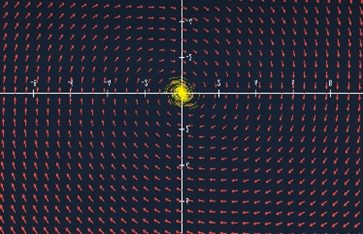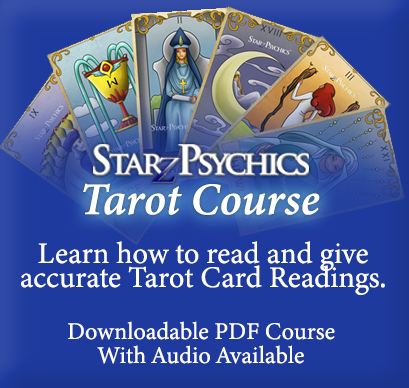|
.jpg)
CONTEMPATING CHAOS
A Metaphysical and Scientific View on the Uncertain
Chaos is a loaded word. Nuances of difference in common usage, mathematics, religion, science, and philosophy are inherent in the term. This article will discuss the possible origins of chaos and how it shapes our reality from both a metaphysical and scientific viewpoint.
DEFINITION
In common usage, chaos denotes random disorganization. Chaos theory has a somewhat different premise. Chaos is the study of how the unpredictable arises from the predictable. Its unpredictable behavior derives from great sensitivity to small changes in its initially predictable conditions. Great differences in outcome result from slight differences in initial conditions so the future becomes a blur. This means the future cannot be foretold with accuracy in chaotic systems. Chaos is not exactly random. It does overlap with order—up to a certain point.
INTRODUCTION
We are the product of other dimensions of existence—many scientists are coming to believe this—but science is limited to the materially observable. I always like to begin at the beginning and look at the roots of any subject. The material world appeared from the unobservable to the observable. This necessitates an examination beyond physics meaning metaphysical or spiritual. I believe consciousness is the root of our reality and chaos is an aspect of that consciousness. The most advanced concept of the creation, in my opinion, is found within the philosophical streams of Neo-Platonism and a related ancient wisdom tradition called Gnosticism. The Gnostic creation story is a virtual analog to modern scientific theory.
Gnosticism was a marriage between Eastern and Western traditions—Hellenistic philosophy, Hermeticism, and Jewish mysticism with ancient Eastern traditions such as Hinduism and Zoroastrianism. Baptized in the powerful intellectual waters of Alexandria, Egypt, Gnosticism predated Christianity but became the mystical branch of the early Christian Church. Though eradicated as heresy by the more dogmatic orthodox branch of Christianity, Gnosticism exerted tremendous effects on the Christian religion for many centuries. As mentioned, I found the Gnostic creation story to read like an ancient primer on major theories of quantum physics, so let’s begin there.
THE CREATION OF ORDER
Everything began with the One or Source Consciousness. Through the action of its internal polarities that were described as male and female forces or yin and yang in Eastern terminology, the One generated other conscious beings called Aeons or Eternities. The Aeons were actually the archetypes of existence with names like Truth, Love, and Wisdom. The Aeonic creations were not simultaneous. They were formed by a specific repetitive process, a feedback loop routine. Each Aeon had to loop back to the Whole for the energy to produce a new Aeon. This means the parts (Aeons) required the Source’s Consciousness or Energy for an orderly co-creative process. This stands to reason. The Source, after all, was the birthing creative force of everything to begin with. Like successive copies of a CD where new copies have slightly less fidelity than the one preceding it, each successive Aeon contained slightly less vibration possessing lower consciousness than its predecessor. What’s important here, however, is that each Aeon had to go back to the Source Consciousness to derive “consent” to create. This feedback loop of creation is a recursive process. It is a repetitive process in which the parts require the whole to produce new forms. Remember the term. It plays an important role in our story.
THE ORIGINS OF CHAOS
The Source and its Aeonic creations collectively populated a dimension of perfect harmony and order called the Pleroma or the Fullness. But outside the Fullness lay a shadow called chaos. Chaos was an unformed area of potential left unorganized by the Mind of the One. But why would such a thing exist? It gets a bit complicated here. The answer is implicit rather than explicit in the texts. The One created the Aeons to be independent beings to share in the creation. They knew themselves to be themselves but also knew that they were part of the Source. To be an independent being requires free will, otherwise, they would never be independent parts of the Whole but mindless mirror reflections.
Free will requires choice. True individuality cannot exist without it. But the Source dimension or Fullness was characterized by a harmony in which the Aeons used their free will to be in sync with the One. To exert one’s own will independent of the One was impossible in the Fullness, so where could independent beings assert their own will? It seems that the Source allowed a place for individuality to run its potential course. The paradox was solved by the existence of chaos, an unformed, unorganized dimension of potential existence set apart and described as a shadow outside of heaven or the Fullness.
One of the Aeons called Sophia (Gr. for Wisdom) decided to exert her will independent of the One and the co-creative process described above. She plunged her consciousness into Chaos. Now begins some very interesting intersections with modern science. We often picture chaos as a random void, but science has shown that no voids exist. Even in vacuums, seemingly empty space seethes with virtual particles of random potential to become material.
The high energy of Sophia’s contact with Chaos activated the virtual particles (called “proto-matter” in the texts). To make a very long story short, all this activity leads to the formation of matter and the material world, a dimension where consciousness struggles to organize itself in a sea of random impermanence. In the next part, we’ll move from the metaphysical to chaos in our experience of everyday reality.
PART II
OF ORDER AND CHAOS
Our world is both orderly and chaotic. Newtonian mechanics can predict the planetary motions and gravity produces predictable universal effects. In this sense, science speaks of deterministic conditions or predictable sets of outcomes. But in many other instances, what starts as determinism gives way to chaos or unpredictability. Roll a ball down a hill and the deterministic law of gravity is in effect. But, you can’t determine the exact trajectory of the ball or exactly where it will come to rest. You might be able to approximate the vicinity in which it lands but that’s probability, not predictability.
Chaos theory concerns itself with variances in initial conditions of deterministic systems leading to uncertainty. Our ball can start under deterministic conditions, but it morphs into chaos as a result of minute changes in wind or ground conditions as it moves downhill through time and space. A hurricane’s path can be predicted to a certain point but then variables like water temperature, land proximity, ocean depth, and ambient air pressure kick in to make the point of landfall unpredictable. The best we can do is speak of probabilities. Speaking of probabilities, the quantum field from which our world arises is chaotic in the sense that quantum motions can only be described in probabilistic terms and never be absolutely determined.
FORCES OF NATURE
Fractals-- Chaos theory is about ordered actions producing chaotic (differing) results. Science has noted natural and mathematical patterns related to chaos called fractals. These are similar, repetitive (recursive) patterns occurring at differing scales. Like a hologram, each fractal segment is a similar but slightly different reflection of the whole of which it is part. Mathematically, minute changes in the initial creative conditions produce similar but unpredictably different fractal patterns.
A common example of fractals in nature is a close-up of a Romanesco cauliflower. Each small segment looks like the whole cauliflower.

On a scaled basis, you can say the small gives rise to the large or the large reduces to the small. This recursive generation process of similar but different forms is exactly described in the Gnostic creation story in Part I. The parts or created spiritual beings looped back on the Whole to co-create or generate new beings of differing vibrations. Vibrations in this case can be defined as levels of consciousness.
Entropy--Even speaking of seemingly embedded predictably deterministic laws like gravity and Newtonian mechanics, we must acknowledge that chaos is the ultimate outcome. Why? Entropy. Entropy is the degradation of the matter and energy in the universe to an ultimate state of inert uniformity. Nothing is permanent in this world. Everything degrades—our bodies and ultimately all features of the universe. We are like a bubble, a ripple in the quantum energy field from which we arose, and bubbles eventually burst.
AN ATTRACTIVE PROPOSITION
Chaos theory is really about understanding how dynamic objects move through space and time. All movement mathematically occurs through phase space, which can be plotted as vectors on a Cartesian X and Y axis. The forces that control the patterns of movement are called Attractors. The Attractors create the three basic patterns of movement in the pictures below.
The first pattern shows the objects rotating into a single point or singularity in the axis center. The second pattern is like a rotating loop around the center point. The third pattern forms a continuous loop where no point or object ever repeat the same trajectory or touches another point. This is a fractal pattern. At a certain juncture depending on the initial number input (the initial condition) it displays the organized butterfly pattern shown or it flies off into uncharted infinity (chaos). No wonder it's called the Strange Attractor.
 .jpg) 
Human beings are dynamic objects moving through space. I submit that our attractors are levels of consciousness, the force of our minds that govern our actions either consciously or unconsciously. To understand the significance here, let’s go back to where we started with the Gnostics.
GNOSTIC REDUX
Human Attractors--The Gnostics identified three types of human beings as defined by their levels of consciousness or spiritual awareness. These were the pneumatic, psychic, and hylic. Translated from Greek, this would be the spiritually-oriented, the mind-oriented, and the materially-oriented. Let’s match this information to the graphics above.
Most spiritual traditions and religions believe in a higher power in a dimension of harmony and unity. People of this orientation actively work toward that state according to their best comprehension. This type of attractor would lead to the tightly focused singularity depicted in the first graphic. The mind-oriented are those who are unsure but questioning or seeking with a feeling that something greater may exist beyond material appearances. Their consciousness would graph as a looser but organized rotation around the center point Attractor in the middle diagram. The materially-oriented are those completely taken in by material appearances with no belief in any consciousness beyond their own. That is ultimately chaotic and so relates to the last chaotically expanding graphic.
I don’t want to oversimplify or attach any judgment values to the speculations above. Every consciousness type will experience what appears to be randomness and chaos in their lives. An old popular TV show called Kung Fu was about an Asian monk in the Wild West. All kinds of bad things happened around him. The theme of the show was built around how he maintained his inner equilibrium. His awareness of higher forces enabled him to bring personal order to the chaos around him. That bubble of order and equilibrium is spiritual consciousness in action.
PART III
IN THE FACE OF CHAOS
In Part II we spoke about Attractors or forces that create mathematical patterns that I correlated to human behavioral patterns. My neighborhood was recently devastated by two monster hurricanes days apart. We took in some families from lower-lying homes who might have drowned. One of those families later helped us after the second storm when we were sheltering elsewhere waiting for water and power to come back on. They noticed that water had flooded into the upper level of our home from wind-driven rains. They laboriously mopped the floor with towels thereby saving us from further damage.
This was one of many examples of neighbors helping neighbors many of whom had lost everything. All my neighbors kept a remarkable sense of resilience and equilibrium during the surrounding chaos. The consciousness of unity and willingness to help others was palpable. That was the operation of the spiritually-inspired Attractor amid wider chaos.
Returning to the Gnostic creation story, chaos and the material world arose out of the organized, static, deterministic dimension of the Fullness. Chaos flowing from order—this is the essence of chaos theory. Like so many other aspects of modern science, the Gnostics got there two thousand years before us. But they said the material world was imperfect and impermanent. Like a ripple or bubble in the sea of infinity from which it arose, it would eventually dissolve to its ground state (entropy).
Life resembles a pocket or limited expression of energy like a limited TV series that plays out its course. Eventually, this energy will dissipate, but I don’t mean to say it is lost. I think rather that it transmutes back to its source and adds a new quality of experience to the totality. This is similar to the way a TV series ends but continues on in the in the conscious experience of its creator or viewers.
So, the phenomenon of chaos is more an impermanent appearance than a base condition, but it is necessary for the function and existence of an apparent (actually an illusory) physical reality apart from the infinite spiritual Whole. The Gnostics said this world was a shadow imitation of the infinite dimension meaning it has some elements of the Whole—order and determined outcomes—mixed with uncertainty, unpredictability, and randomness. Spiritually, this is what Jesus meant by learning to separate the wheat from the chaff, the eternal from the perishable.
Chaos is necessary for physical reality but it is not reality. Chaos, like this finite world, is an experience of potentialities that are based on the initial conditions we set in our minds both individually and collectively, the former being more controllable, the latter more unpredictable. This may explain why siblings from the same family can produce both the pinnacles and dregs of society. Another way of saying this is that we have some control over our lives but we are still subject to plenty of uncertainty. The ratio of order to chaos is a matter of degree just as our growth in consciousness occurs by degrees. Like the monk in the old Kung Fu TV series, our inner equilibrium can serve as a counter to the mass mind chaos surrounding us.
I think the best way to navigate life is with Jesus’s advice. Learn to focus on the eternal, however you conceive that. My book Quantum Spirituality is about making connections with higher consciousness. It covers the topics of this article in depth. If this article has given you any perspective on the nature of our reality, please think about it and use it to further your own understanding of the world around us and how we experience it.
Author Bio:
Peter Canova is an international businessman who, after a series of life-changing spiritual experiences, began writing on spirituality and consciousness. He is the author of the 25x award-winning First Souls Trilogy and has contributed to the popular Chicken Soup for the Soul series. His latest book, Quantum Spirituality has won 13 literary prizes over the course of the past year and swept the American Book Fest Awards in four categories. https://petercanova.com
|




.jpg)


.jpg)
